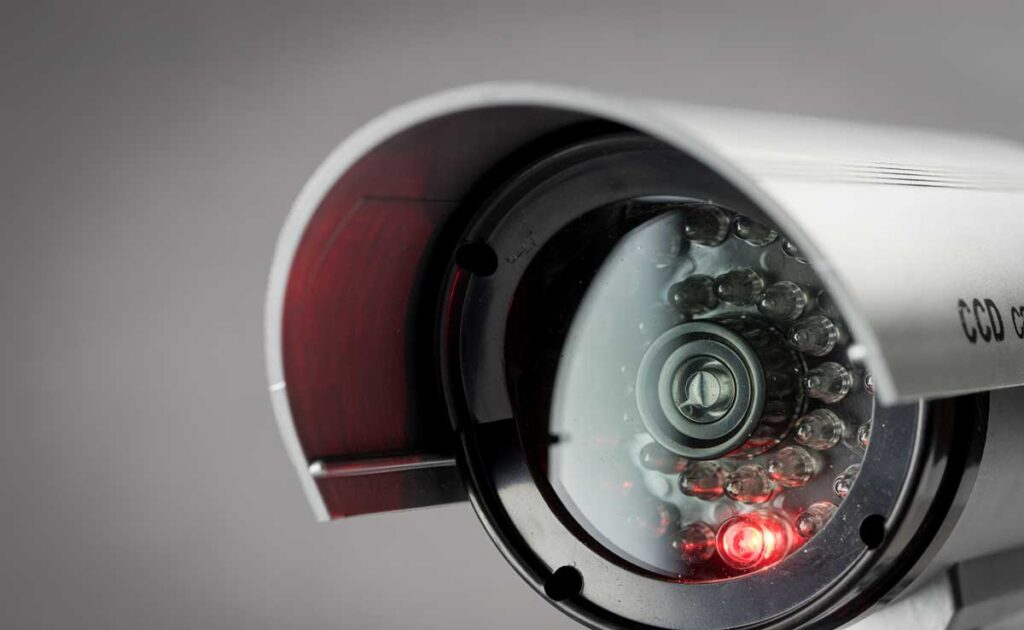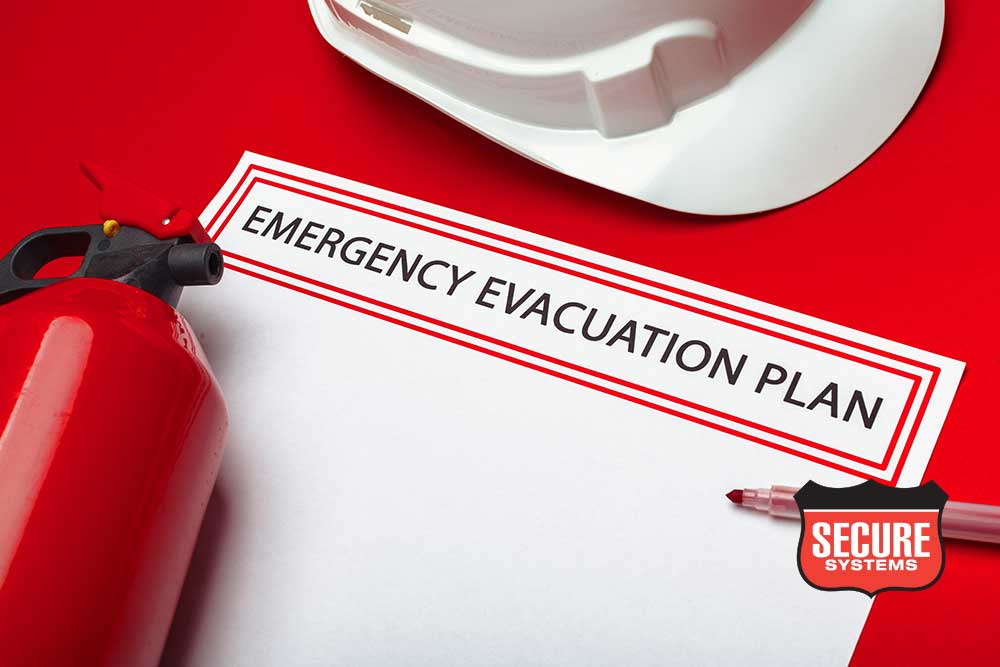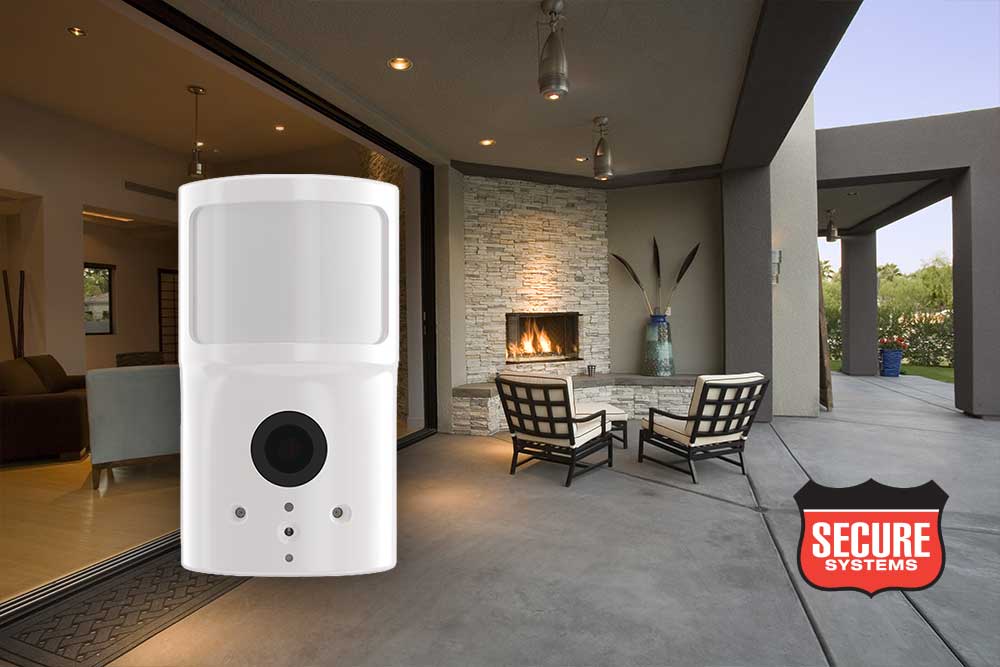For most companies, camera systems have become a routine, necessary part of security for protection from thieves, vendors and dishonest employees. When designed and installed correctly, security cameras can help to deter crime and vandalism, identify activity and visitors, aid in training and work flow, and support other proactive behaviors. As a Bakersfield security company in business for more than 40 years, Secure Systems would like to share this information on how to design safe, effective security cameras for businesses.
Top Considerations for Security Camera Design
While camera technologies have evolved, they also require a proper understanding of how they capture video and transmit and store the information. When purchasing a system, it is important to understand the objective to provide a system that meets the goals and expectations of the organization. In addition to making sure cameras are compliant with the National Defense Authorization Act (NDAA), setting up a separate network is one of the key factors that can decrease the chance of being hacked or compromised through the cameras and improve overall functionality of the system. Like all technology, cameras have improved drastically over the years in their ability to capture better pictures and potentially identify specific people, animals or vehicles. Internet Protocol (IP) cameras have become the standard to achieve the best performance.
Choosing Security Cameras for a Business
The first question a security integrator should ask is, “What are you trying to observe?” Secondarily, “What are the key areas of the premises you are observing?” The answer may be entry doors, a parking lot, a warehouse space, an assembly line or a server room. By providing the answers to these questions upfront, a business can help the security integrator create the most appropriate system for the application. Here are some further considerations.
Types of Security Cameras
Because cameras are not a “one size fits all,” taking the time to understand the differences in cameras is critical. Typically, IP cameras will be described by the style of camera: turret or vandal dome cameras, bullet cameras, or pan-tilt-zoom (PTZ).
Security Camera Megapixels
The lens will be rated by the number of megapixels (MP, sometimes referred to as “megs”): 2MP, 4MP, 8MP (also known as 4K), and so on. A common misconception is “the higher the megapixels, the better the camera” regardless of the application. In reality, you need to understand and define what role the camera will play before selecting megapixels.
Area of Coverage
Part of the role the camera will play is the area of coverage. For instance, a camera at a door is looking a short distance; its focus is on a small area, as it aims to discern who is at the door. In many instances, a 2MP camera is the perfect camera for this application.
If the camera is meant to cover a larger area, such as a parking lot, it may require a 5 MP in order to see a longer distance while providing a clearer image.
Security Camera Style
It’s also important to determine the style of security camera needed for the application. Some examples: A turret dome camera can have a 360-degree field of view, and the lens can be adjusted for a specific field of vision. A turret vandal dome camera has the same capabilities, but is in a housing with higher security features. Finally, a bullet camera can be directed for a long distance at a specific area. A good security integrator can advise a business on which security camera style will be most suitable for the application.
Network Security and Bandwidth
Security of the network, and limiting the amount of bandwidth on the network, should also be of utmost concern. Network security questions that must be addressed include:
- Is the equipment NDAA compliant?
- Are the cameras best to be on their own network?
- Can the network support the data across the network?
- Can the WAN support the camera network as well as other concerns?
For instance, if you were to purchase 32 4K cameras set at 32 frames, will the NVR support that bandwidth? In addition, do you have the proper amount of storage space? Can you achieve the objectives with lower resolution cameras? If so, this would reduce bandwidth, processing and storage requirements and save a significant amount of money to the end user, while also providing a system that still meets all of the objectives. A knowledgeable security integrator should be able to expertly design a camera system that achieves the objectives within the business owner’s project budget.
What Comes Next
Once the initial security camera design has been done, understanding which areas need to be monitored – and, the distance they will be viewing, as it is critical to understand the bandwidth they will draw and how to set up the network. In particular, the network is something that should be given top priority to decrease the security risk (because these cameras utilize a LAN network). Setting up a separate network is highly beneficial, in that it:
- Tightens the overall security of the cameras
- Offers less risk to them being hacked as part of an overall network
- Makes identifying recording and speed problems easier because of the closed network
Protecting Security Cameras from Hacking
When security cameras are hacked, it can open up the data throughout the entire business to being compromised. It is not uncommon to hear about businesses being breached through a seemingly harmless device, such as a smart thermostat or lighting system or potentially a security camera. By taking the security cameras out of this network, it reduces the threat of these devices becoming a conduit to a network, and the cameras themselves being compromised or viewed.
More Questions and Considerations
When designing the security camera system, it is critical to address the following questions:
- Do you need to monitor persons on the property?
- If the answer is “yes,” do you need face recognition (and/or specific object recognition)?
- What is the traffic flow, and is license plate recognition critical to capture?
It can’t be understated: When specifying cameras, it is important to understand that more megapixels does not always mean it is the better choice for a location. Just because you purchase a 4K camera does not mean it will function any better than a lower resolution camera (such as a 2MP). There are many factors that affect this, such as the amount of light where the object is relative to the focus and speed at which the object of concern may be moving.
Some Final Thoughts
Taking the time to understand the types of cameras, what they are supposed to capture, the lighting at night and the bandwidth draw are all critical elements to understand. By taking the next step and putting the cameras on their own network, this will not only improve the functionality of the system; it will also provide another layer of critical security in protecting potential breaches. The most effective systems are those that have been carefully thought out and executed. For more information on designing or obtaining safe, effective security cameras for businesses, call Bakersfield security company Secure Systems. We look forward to assisting you.
- Why Local Businesses in Kern County Trust Secure Systems for Their Security Needs - November 19, 2024
- How to Integrate Surveillance Cameras into Your Home Security System - November 19, 2024
- Top 10 Security System Features Every Bakersfield Homeowner Needs - October 5, 2024



